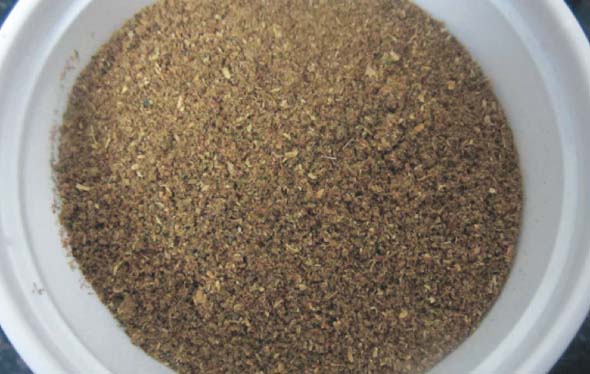Mama’s Punjabi Recipes: Sugar di Dava (Sugar Control Home Remedy)
(This recipe was first published in December 2012 and is being repeated with some minor revisions for the third time by popular demand)
Diabetes has become a worldwide epidemic among Indians, and especially gets manifested when they reach mid-life and beyond. Our Indian diet which is rich in foods that are fried, have triggered high triglycerides rates among Indians and since these are the rich in refined sugars contribute to stress on the liver, pancreas and kidneys. Usually, this leads to a lower sensitivity to the production of the body’s own insulin and, apart from medication, exercise and diet is important in order to control diabetes or its onset.
Traditional Punjabi home remedies to combat high blood sugar levels rely on herbs and vegetables that are bitter to taste and are considered effective in reducing these levels. Now, scientific studies have confirmed the hypoglycemic effect of the popular vegetable, kerela (bitter melon). Its juice can be drunk and its extract is also sold in capsule form.
Methi (fenugreek) is another popular vegetable that is also thought to be able to control sugar levels and is eaten stuffed in paranthas or with aloo (potatoes) as a dish. For effective control of sugar, it is best eaten when its seeds are ground up as a powder.
Kali jeeri (dried black cumin seeds) are found all over the Indian Subcontinent, usually above 5,500 feet elevation. They are used sparingly in cooking to add some extra aroma and help in digestion, but it has been traditionally known to help reduce sugar levels.
Another herb that is now being promoted as an antioxidant in the West is dal chinni (cinnamon). It has been used in Indian kitchens for centuries either in cooking (especially rice) or in teas or ground up and sprinkled as a flavoring.
For the old traditional Punjabi methods of treating high blood sugar levels, I have found that this recipe is very convenient and has helped control my own sugar level. After taking it for a few months, you will notice a difference in the sugar levels, though you should continue to use your regular medicines too. In the olden days, we did not have a method to measure the blood sugar, but now the meters have made it more convenient, so it is important to take a sample reading every morning.
Kali jeeri is often not easy to find, but some Indian grocery stores do carry it. In Houston, I have found it at Patel Brothers stores. Do try this easy home remedy to see if it works for you! Some people say it can also help to reduce bad cholesterol and cure rheumatism and lead to an overall increase in energy and strengthen the immune system.
Ingredients:
1. 50gm methra (fenugreek seeds)
2. 20gm ajawain (carom seeds, also called Bishop’s Weed)
3. 10gm kali jeeri (black cumin seeds)
Directions:
1.Combine the three ingredients and warm them slightly over a tava (hotplate)
2. Crush the combined seed into a powder in a mixee or blender and save it in a glass jar with a tight lid.
3. Before going to bed at night, place half a teaspoon of the powder in your mouth and rinse it down with a glass of lukewarm water. After some weeks, you can increase it to one teaspoon if you like.
4. Drink the mixture every night for 6 months to a year for best results. Some people see a drop in blood sugar levels within a month.
5. As you see a reduction in sugar levels, you can reduce the dose and then eventually reduce it to once every other day to maintain the reduction.
MAMA’S TIP OF THE WEEK
ORGANICALLY RISING KHAMIRA ATTA (SOUR DOUGH)
For those who make rotis at home – in my observation, this number is surely quite low in the US – often the atta (wheat flour dough) can be accidentally left out of the refrigerator, In India this happens quite often so people only knead as much as they can consume. Especially during the warm days and nights, the atta sitting outside, un-refrigerated, will start to ferment and will naturally rise, without any yeast in it.
This dough is called khamira atta (sour dough) and is used to make rotis that fluff up almost like fried kulchas and has the taste of sourdough bread. These taste quite good with either dals or channe (chickpea curry) without the bother – and calories – of deep frying the bread.
Shakuntla Malhotra is a skilled cook of Punjabi dishes made in the old-fashioned style that she learnt as a young woman in her ancestral home in Lyallpur, India before it became part of Pakistan after the Partition in 1947. People have often admired her cooking for its simplicity and taste that comes with each mouthful. Even in her mid-eighties, she continues to cook daily and agreed to share some of her delectable Punjabi recipes.


